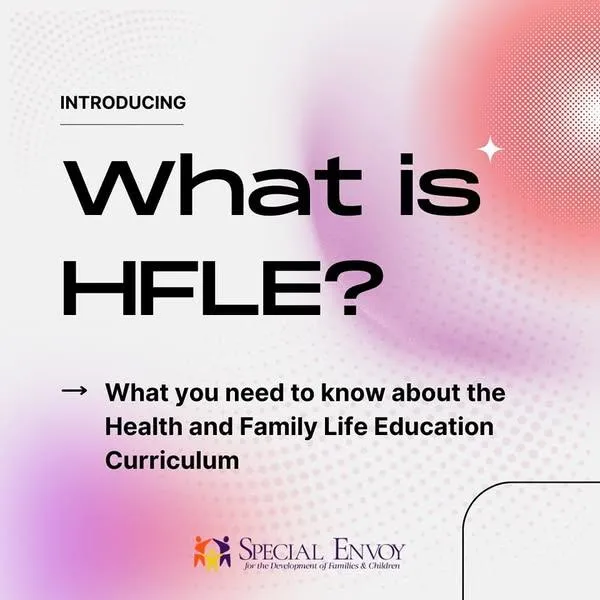Welcome to Our Blogs
INCREASE YOUR AWARENESS
Follow along as we share valuable knowledge and content to enrich and empower your everyday life.

What is Health & Family Life Education (HFLE) Curriculum?
What is Health & Family Life Education (HFLE) Curriculum?
The Health and Family Life Education (HFLE) Curriculum was recently revised in 2023 to better reflect the current landscape and reality in Belize.
The HFLE includes a comprehensive Teacher’s Guide to provide teachers with materials and resources to foster the development of knowledge, skills, and attitudes that make for healthy family life at the primary school level.
Teaching Health Education is one of the most effective strategies that a country can use to prevent major health and social problems and contribute towards the management of the social ills affecting society.
Next to the family, schools are the major institutions for providing the instruction and experiences that prepare young people for their roles as healthy, productive adults.
Schools can and invariably play a powerful role in influencing students' health-related behaviors. Therefore, at the primary school level, health education is an important part of the curriculum and encompasses many teachable elements.
With a focus on clarity of expectations, mastery, engagement, and preparations for the real world, the HFLE curriculum provides a foundation for individuals with the knowledge, skills, and conscious attitude to enjoy a lifetime of health and family life.
It is intended to empower students to make better decisions regarding healthy living and be more prepared to cope effectively with the many challenges of life.
Information referenced from the Revised Teacher’s Curriculum Guide for Primary Health Education Curriculum.
Why is Health Education Important?

The Health and Family Life Education (HFLE) Curriculum provides a comprehensive overview of the importance of offering health education in the classroom.
Firstly, an effective health education program gives students the correct health knowledge to maintain and improve their health, prevent disease, and avoid health-related risk behaviors.
Secondly, because health education is a subject dealing with life and life values, an effective program includes lessons on mental and emotional health; family living; growth and development; nutrition; personal health; alcohol, tobacco, and other drugs; communicable and chronic diseases; injury prevention and safety; consumer and community health; and environmental health.
Thirdly, health education is also vital to developing specific knowledge, skills, and
attitudes to promote health wellness competence. This is because health education helps adolescents acquire functional health knowledge and strengthens attitudes, beliefs, and practice skills needed to adopt and maintain healthy behaviors throughout their lives.
Finally, considering that health and success in school are inextricably intertwined, good health facilitates children's growth, development, and optimal learning, while education contributes to children's knowledge about being healthy.
Therefore, a quality health education curriculum allows students to develop and demonstrate increasingly sophisticated health-related knowledge, attitudes, skills, and practices that contribute to their overall development and success.
Information referenced from the Revised Teacher’s Curriculum Guide for Primary Health Education Curriculum.
How can Teachers integrate other curriculum areas into health education?

According to the Health and Family Life Education Curriculum Teacher’s Guide, health education offers many opportunities to incorporate other subjects.
For example, teachers can use math by having students create healthy meal plans within a budget, which also involves researching recipes and making shopping lists.
Language arts can be integrated through reading articles on topics like peer pressure and substance abuse, allowing students to use decision-making and communication skills to address issues, communicate their feelings, and seek support.
Science and technology are also closely linked to health. Lessons can cover how lifestyle choices affect the body and explore topics like hormones and human development, enhancing students' understanding of health’s connection to science. Technology lessons can focus on safe online practices and the impact of digital media, helping students make informed decisions about online behavior.
In Belizean Studies, teachers can explore various cuisines and the supply chains of meals, encouraging students to research the origins and resources involved.
Lastly, physical education can be incorporated by having students set and track personal fitness goals.
Still, while there are many ways to integrate other curriculum areas into health lessons, the key to crossing the curriculum is using the resources available at your school.
Information referenced from the Revised Teacher’s Curriculum Guide for Primary Health Education Curriculum.
Teaching Methods and Strategies for Delivering Health Education

The updated Health and Family Life Education Curriculum aligns with Competency-Based Education and offers various teaching methods and strategies for teachers to convey the concepts and topics effectively. These include:
1. Health Talks: Effective in small groups, allowing for personal participation and sharing of health knowledge.
2. Lecture with Discussion: Community members can provide lectures, followed by discussions, to allow students to express thoughts and receive feedback.
3. Group Discussion: Encourages open dialogue among participants, often following presentations. It fosters collective problem-solving and planning.
4. Role Play: Participants act out real-life situations to understand challenges and practice communication, planning, and decision-making skills.
5. Printed Materials: Posters, leaflets, and other materials support learning. Mass media, such as films and puppets, can enhance education, especially in small groups.
When it comes to choosing which teaching methods and strategies to use, teachers are encouraged to adopt activities that fit their classroom setting, student background and needs, and cultural and social context.
(Information adapted from the Revised Teacher’s Curriculum Guide for Primary Health Education Curriculum.)
Sources:
UNESCO. Health and Family Life Education (HFLE) Resource Guide for Teachers: Lower Division.
@ Copyright 2025 - Special Envoy for the Development of Families & Children| All rights reserved

